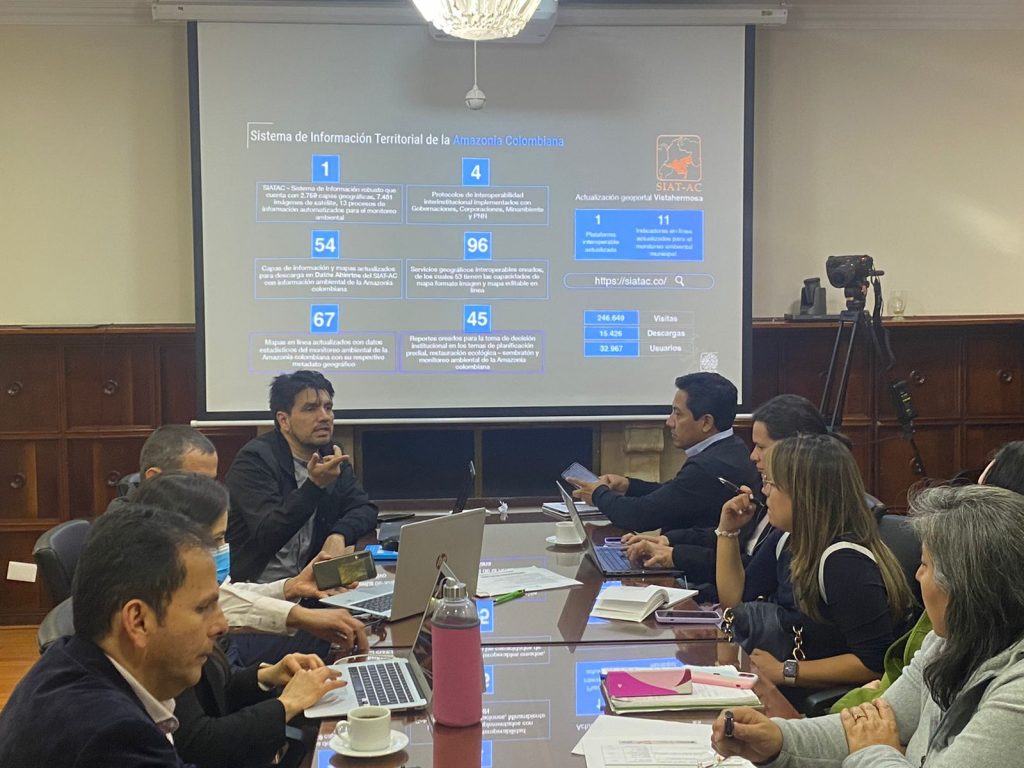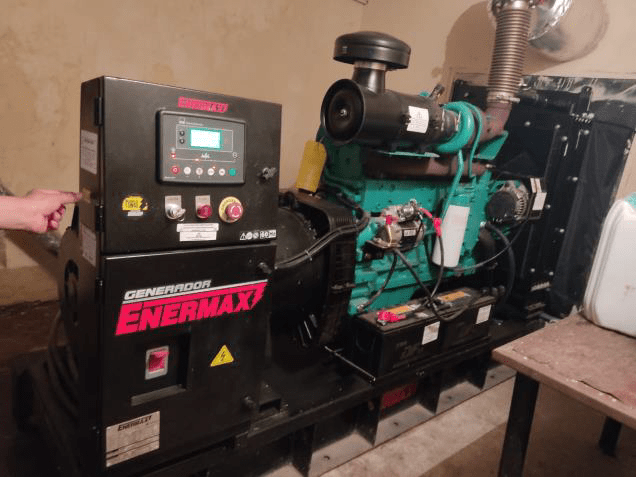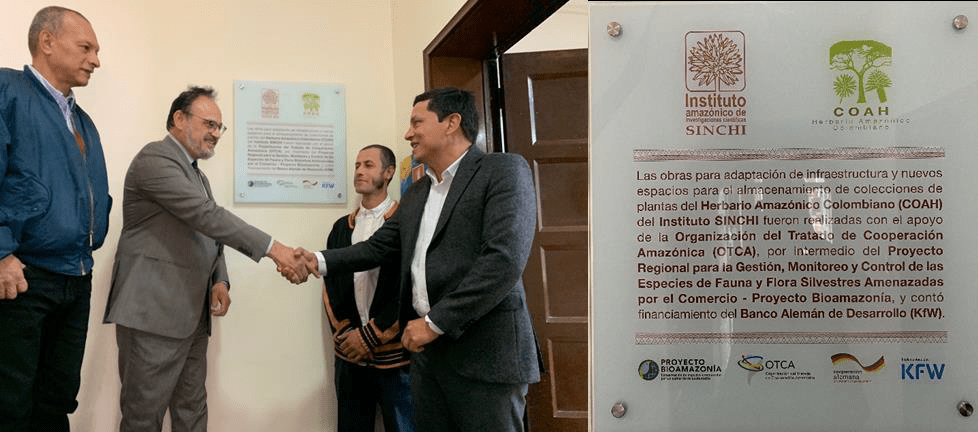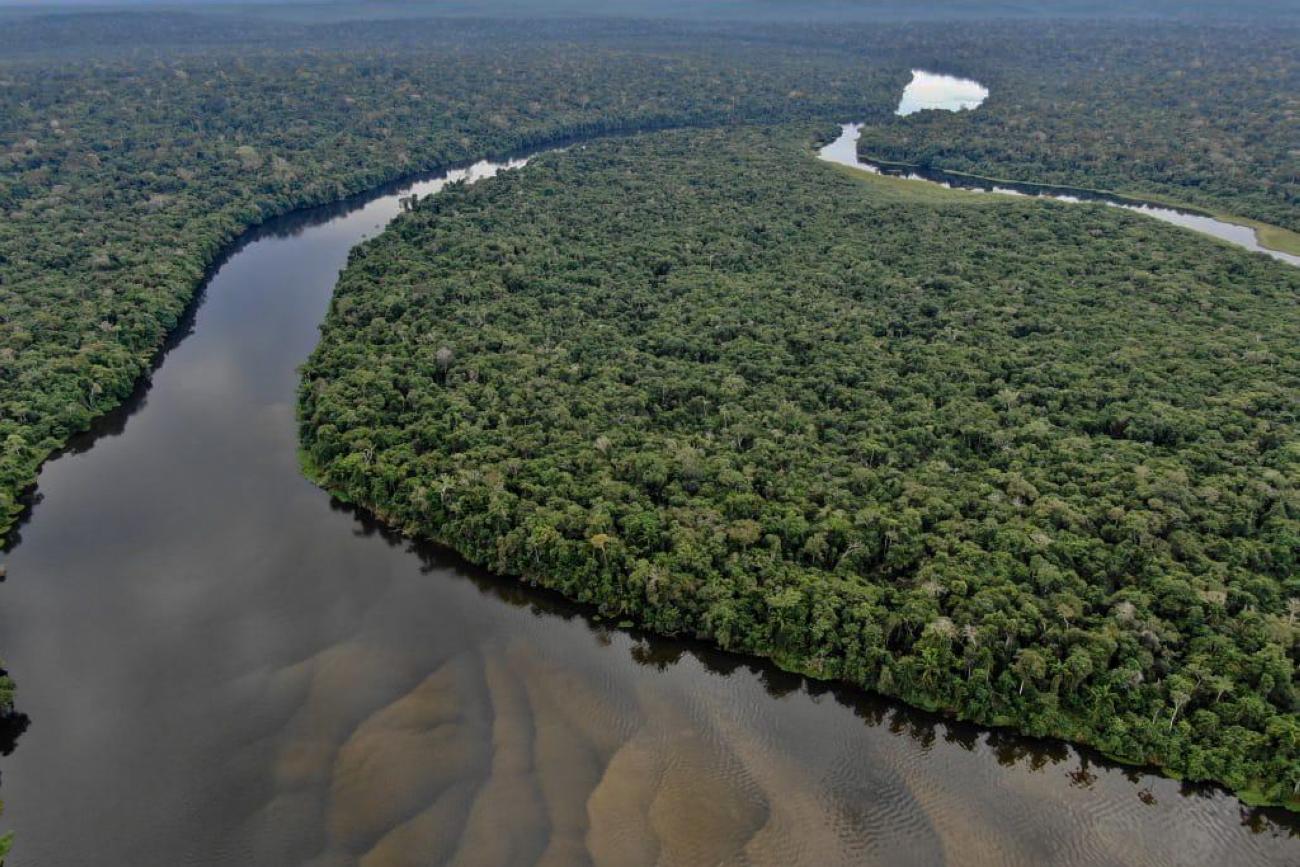The team of the Project visited Colombia to Exchange information and monitor Project implementation.
Between July 25 and 29, the team of the ACTO Bioamazon Project visited Colombia to meet an agenda for information exchange and to monitor the implementation of the project.
Two workshops were held at the Sinchi Institute facilities. The first one was conducted to present to the stakeholders the Amazon Regional Observatory (ARO), its conceptual scope, progress and status of data collection, with the aim of promoting an agenda for future integration among the countries’ institutions. The second workshop was held to analyze the progress and effectiveness of Project Bioamazon until July 2022 and to identify lessons learned and recommendations to improve the implementation of this project.
Participated in the activities proposed in the agendas, representatives the Ministry of Environment and Sustainable Development (MADS), the Sinchi Amazonic Institute of Scientific Research, the Institute of Hydrology, Meteorology and Environmental Studies (Ideam) and the Ministry of Foreign Affairs, among others, which are institutions implementing the Project in Colombia.

On Tuesday, July 26, a visit was made to the Amazonian Herbarium where technical meetings were held and the inauguration of the expansion of the Herbarium and the signing ceremony of the Term of Assignment of Use of the equipment acquired by the Bioamazon Project took place.

Inauguration of the expansion works of the Colombian Amazonian Herbarium conducted with the support of the ACTO/Bioamazon Project
The execution of the Sinchi Institute consists of hiring consultancies for a total of USD 123,645.81 and the purchase of equipment for a total of USD 448,877.48, totaling USD 572,523.29; and the MADS has contracted consultancies for a total of USD 267,362.55.
The General Director of the SINCHI Institute, Luz Marina Mantilla Cárdenas, welcomed the participants, highlighting the good relations that both institutions have maintained over the years in the different initiatives and activities that have been developed jointly. She also highlighted the merits of ACTO, through the Bioamazon Project, for the investments made in support of research.
“Today the Amazon is the focus of attention for its importance, as we are talking about climate stability, climate change and issues associated with producing of relevant information, according to the projects we have had with ACTO. In this sense, it seems very important to us that we understand the role of all the countries in the Bioamazon Project, since we have been looking at these border issues for many years and it is essential that we provide certified information that is statistically standardized and that comes from alliances with other institutions”, said Luz Marina Cárdenas.
“The work that has been developed by the SINCHI Institute from the contributions made to the methodologies and monitoring of the information system on biodiversity and CITES species, to support the management and traceability systems of endangered species within the implementation of the Bioamazon Project, has been fundamental for cooperation between the Amazonian countries,” said Mauro Ruffino, coordinator of the Bioamazon Project.
Field trip
The ACTO team also visited the headquarters of the SINCHI Institute in Leticia. On-site verification of the equipment purchased by the Project was carried out. The verification procedure was the same as the procedure conducted in Bogota, i.e. random sampling, verification of patrimonial labelling, photographic images, and the list of goods. At this stage, the importance of the acquisition of the electric power generator was highlighted for the maintenance and conservation of the different samples and collections of species, as well as for the development of the activities of the researchers in a climate-controlled environment.

Electric power generator for the maintenance and conservation of the different samples and collections of species
PNN Amacayacu
In July 28, the team visited the field station and Mega Permanent Plot in the Parque Nacional Natural Amacayacu (PNN Natural National Park), located in the triple border Brazil, Colombia and Peru, and the first protected area that was created in the Amazon region of Colombia.
This area has more than 5,000 species of plants, and the forest are specific of a region that possess the highest diversity of primates worldwide. The number of bird species is almost a third of the countries’ species and the mammals are a little less than half of the country’s total species.
The Amazon region has to seasons clearly defined: seasons of high water and seasons of low water. Both condition all natural and human activity. In the region, the volume and level of river water fluctuates drastically during the year. During the month of September (dry season), the riverbanks are bare and, as the rains increase, the water level of the river rises, reaching 10 meters of flooding (during May); in an area of at least 500 meters of floodable forest on the banks of the Amazon is drastically different in these two seasons, therefore, it is necessary to visit the area at least twice in the year for understanding the magnitude of this ecosystem.
The Bioamazon team visited the facilities of the Amacayacu National Natural Park headquarters, where the overnight stay conditions were improved for researchers visiting the Amacayacu Permanent Mega Plot (long-term monitoring of 25ha), where about 140,000 individuals of 1,950 fully identified, mapped and measured plant species are monitored.
CITES species
This monitoring is carried out on 11 species included in the CITES Appendices, including Cedrela odorata, threatened in Colombia and recently included in Appendix II; and several species of the genus Cyathea (Appendix II) and of the genus Zamia (Appendix II). Likewise, the monitoring of the native species of the genus Vanilla (Orchidaceae) present in the Colombian Amazon is carried out by means of biological records.
The importance of monitoring these CITES species lies in the fact that there are new records for Colombia, new species for science, and species that have aromatic fruits with important productive potential in the Amazon Region. Through monitoring, the number of known species for the Colombian Amazon went from 8 to 16 species; additionally,120 specimens of the Vanilla genus were incorporated into the herbarium, making this collection of vanillas the most complete in the Colombian Amazon, and as a CITES species, an important object of monitoring in the region.
Also, the monitoring of Zamia hymenophyllidi was carried out in the PNN Amacayacu. In 2019, the monitoring of 278 individuals was completed where information was recorded regarding the spatial location of each individual in the permanent plot (X and Y coordinates), their stem height, number of total leaves, number of new leaves and leaf measurements (petiole, lamina and pinnae). Other species such as Zamia amazonum, Zamia lecointei, Zamia macrochiera and Zamia ulei have identified natural populations and will be monitored.
The objective of the field visit to this place was to verify in situ, both the use of the different field equipment acquired by the Bioamazon Project, and to learn about the work dynamics of the team of fauna researchers. The researchers Mariela Osorno and Natalia Atuesta, who together with the other scientific collaborators coordinate the work of collecting specimens of amphibians (especially frogs and toads), reptiles (lizards) and small mammals (especially bats) to feed the collections of the Sinchi Institute where in charge of receiving the equipment.
The field scientific collaborators explained about the capture methods used, as well as the labelling and preservation of the specimens collected during field workdays. Likewise, electronic devices were shown to track and capture the singing sounds of large frogs, to know their displacement dynamics and mating habits.
Subsequently, a brief tour was made through the trails where the camera traps are installed to monitor macrofauna, such as felines, armadillos, Anteaters, etc. A demonstration was made of the installation of the camera in the field and the removal of the storage device (SD memory) from the photos taken during the night.
With information from SINCHI Institut.
Published in the Bioamazon Newsletter, #16, July-August 2022.
========================================================================



